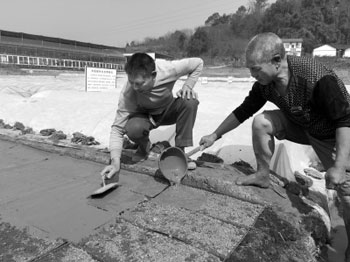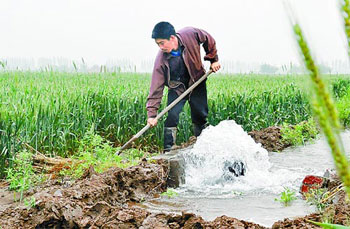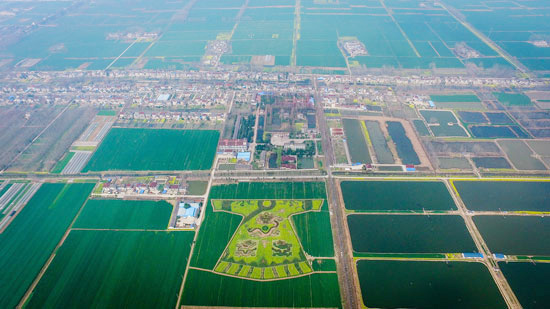Chongqing: a New Type of "Agricultural Film" for Ecological Rice Seedling raising
Original title: biogas residue fattening seedling bed biogas liquid soaking seeds covered with non-woven cloth
Chongqing promotes the technology of ecological rice seedling raising.

Nutrient soil preparation of green ecological rice seedling raising technology.
"this is not a traditional agricultural film, but a non-woven fabric, which is ventilated and absorbs water, and the debris of the non-woven fabric has little pollution to the soil." Recently, the on-site training meeting on the new technology of raising rice seedlings in Chongqing was held in Huangzhuang Modern Grain and Oil Science and Technology demonstration Park in Jiangjin District. Agrotechnical personnel and major grain growers in some districts and counties who went to study on the spot had a strong interest in the green ecological rice seedling raising technology.
According to reports, green ecological seedling raising includes green ecological dry seedling raising, dry raising blanket seedling transplanting machine, dry raising without disk throwing seedling, dry raising plastic plate throwing seedling, and so on. Its core is the biogas residue fattening seedling bed, biogas slurry seed soaking, non-woven cloth covering. About 25 days before sowing, biogas residue and calcium superphosphate should be applied on the seedbed to fertilize the seedbed soil by stacking and film-covering fermentation retting. After seed drying and seed selection, the seeds should be mixed with 1 ∶ 1 in biogas liquid or soaked in the original solution for 36 hours before sowing. After sowing and covering the soil, first lay a layer of ultra-micro film on the side of the box, and then build an arch shed to cover the non-woven fabric.
"Seedling has been used for half a year." Guo Feng, a researcher at the Municipal Agricultural Technology Promotion Station, said that non-woven fabric is ventilated and absorbs water, which can reduce the risk of burning seedlings at high temperature. Rain Water can also infiltrate, and there is no need to manually uncover the cloth for water management. The adoption of green ecological seedling raising technology can save more than 4 seedling labor; coupled with the advantages of water saving, the cost of raising seedlings per mu is more than 50 yuan, and it has higher seedling emergence rate, more tillers, stronger growth and sturdy stems than that of agricultural film mulching, which can make more effective use of nutrients and lay a good foundation for high yield.
"the 2015 test results show that after using this technology, the average increase is 26.8-97.2 kg per mu, up to 5% and 10%." Guo Feng said: compared with the traditional seedling raising technology, this "upgraded" seedling raising technology reduces the amount of chemical fertilizer used through the use of biogas fertilizer, which is conducive to improving soil structure and texture; non-woven cloth is covered with air and water, and can be degraded, even if some of the fragments enter the soil, it will not cause negative effects similar to agricultural film blocking the transmission of soil moisture and nutrients, which is conducive to the protection of the ecological environment of paddy fields. In short, it is both ecological and environmental protection.
"Today's scene will learn the practical techniques of 'two tricks': one is to use non-woven cloth to replace the green ecological seedling raising of agricultural film, and the other is to add a layer of hemp film to the bottom of the seedling raising hard disk in the greenhouse, which is not only conducive to water conservation, but also conducive to seedling plate and root." Ouyang Jing, general manager of Jinqiao Agricultural Machinery Company in Dazu District, said that he will apply what he has learned in the seedling raising operation this spring and strive for a high yield this year.
It is reported that in the past three years, this new technology has been explored in some districts and counties of Chongqing, and a relatively complete set of technical specifications has been formed, which is ready to be popularized throughout the city from this year. (our reporter Deng Li intern Wang Xiewen / photo)
- Prev

Prediction of moderate occurrence of pests in Hebei Province in the first half of the year
Prediction of moderate occurrence of pests in Hebei Province in the first half of the year
- Next

A rape field in Nanjing planted a "dragon robe" for a big show.
A rape field in Nanjing planted a "dragon robe" for a big show.
Related
- A course of planting techniques and methods on how to grow carrots
- How to plant the latest tulips?
- Is it better to pick tea in the morning or in the afternoon? When is the best time for tea to be picked? what is the third or fifth tea?
- Launch Yuanxiao Happy combination Haocha + Tea Yuan healthy Taste
- Penghu Tourism "Fireworks 20 Parade with You"
- 2022 West Lake Happiness holds "Digital Revitalization Voucher" and draws iphone13 and laptop.
- Banqiao Fuzhou social houses are designed to change start-up combined with police elimination to create a safe and livable environment
- The convenient measure of "mechanical weeding" in Xinbei has been abused and the Agriculture Bureau has imposed heavy penalties on the illegal land consolidation.
- Changgeng University Joins Hands with Four Memory Factories to Rescue Memory Talent Shortage
- The list of Taiwan's top 100 MVP managers is listed by the Director-General of the Farmers' Association of Sanxia District.

